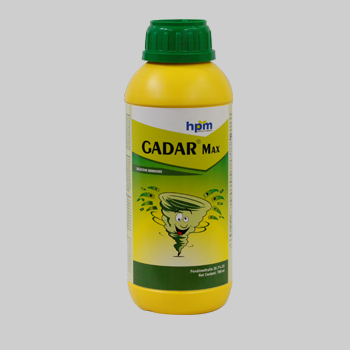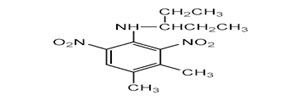- HOME
- ABOUT
- INFRA
- BUSINESS AREA
- KNOWLEDGE
- CSR
- Policy & Committe
- Activities
- Plantation Drive(Samba)
- Green Nation Clean Nation Plantation Drive
- Santosh Krishi Diwas
- 14 TH SENIOR ROLL BALL NATIONAL CHAMPIONSHIP
- Arm Wrestling Championship
- Clothes Distribution for Students
- Samuhik Vivah Bhiwadi
- Help him to Breathe
- WHEELCHAIR DISTRIBUTION KHUSHKHERA
- Girl's Adoption CSR
- Save Eyes Save Life
- CAREERS & HR
- NEWS
- CONTACT
- BLOG
QUESTIONS? CALL: 011-4507 1800

Stands for delivering best service and exceptional quality for crop protection.
Tel. (911) 45071800-899
Email: info@hpmindia.com
HPM Chemicals & Fertilizers Ltd.
209-210, Anupam Bhawan, Azadpur Commercial Complex Azadpur, Delhi-110033

GADAR MAX (HERBICIDES)
GADAR MAX (Pendimethalin 38.7% CS)
- Gadar Max is Selective pre-emergent & pre plant incorporation Herbicide.
- It is used to control most annual grasses and some broad-leaved weeds.
- Gadar Max is recommended for use in Soybean, Cotton, Chilli.
- It is based on advance capsule technology in which a.i. is packed in small capsules and absorbed through both the leaves and roots of target plants.
- It is based on advanced technology by which the chemical doesn’t evaporate at increased temperature
- Capsule locked Gadar Max retains in soil, hence provide time to the farmer between spray and irrigation.
- It spreads on soil and disrupts cell division at the time of weed seed germination.
- It controls E. colonum, Commelina spp., Digitaria sanguinalis, Dactyloctinum aegyptium, Amaranthus viridis, Euphorbia geniculata etc.
- It doesn’t show any harmful effect on crops and soil.
- No residual effect due to which it doesn’t affect adversely on subsequent crops
- It is recommended to use Gadar Max at 600-700 ml per acre.


| Product Name |
: |
Pendimethalin | |||||
| Type of pesticide |
: |
Herbicides | |||||
| Chemical name |
: |
N-(1-ethylpropyl)-3,4-dimethyl-2,6-dinitrobenzenamine | |||||
| Empirical Formula |
: |
C13H19N3O4 |
|||||
| CAS No. |
: |
[40487-42-1] | |||||
| UN No |
: |
3082 | |||||
| Packing group |
: |
III | |||||
| IMDG |
: |
Class-9 [Environmentally hazardous substance, liquid, N.O.S. (Pendimethalin)] | |||||
| Shelf-life |
: |
Two years under normal storage conditions. | |||||
|
DESCRIPTION |
|||||||
| Pendimethalin is an herbicide of the dinitroaniline class used in pre emergence and post emergence applications to control annual grasses and certain broadleaf weeds. It inhibits cell division and cell elongation. Microtubule assembly inhibition. | |||||||
| Mode of action | |||||||
| Selective herbicide, absorbed by the roots and leaves. Affected plants die shortly after germination or following emergence from the soil. | |||||||
| Applications It is used to control most annual grasses and some broad-leaved weeds. It is recommended for use in soybean, cotton, chilli. It protects crops like wheat, corn, soybeans potatoes, cabbage, peas, carrots and asparagus. It is used to control annual grasses and certain broadleaf weeds which interfere with growth. It inhibits root and shoot growth. It controls the weed population and prevents weeds from emerging, particularly during the crucial development phase of the crop. It is used to control most annual grasses and some broad-leaved weeds. | |||||||
| Structure Formula |
: |

|
|||||
| Physical Properties | |||||||
| Appearance |
: |
Orange Yellow Crystals | |||||
| Pendimethalin content, percent by mass |
|
90.00% Min. | |||||
| Melting Point |
: |
54-58 ยบC | |||||
| Material insoluble in acetone, percent by mass , Max. |
: |
1.0% Max. | |||||
| Acidity (as H2SO4), percent by mass, Max. |
: |
0.50% Max. | |||||
| Compatibility. |
: |
Strong alkaline material, acid or oxidizing materials. | |||||
| TOXICITY DATA | |||||||
| Mammalian Toxicity |
: |
WHO (a.i.) III; Slightly hazardous | |||||
| Environmental Toxicity |
: |
The major metabolic routes for pendimethalin involve hydroxylation of the 4-methyl and N-1ethyl groups, oxidation of these alkyl groups to carboxylic acids, nitro-reduction, cyclisation and conjugation. Not toxic for birds, mallard ducks, bobwhite quail. It is very toxic to fish, rainbow trout, bluegill sunfish, channel catfish. It is non toxic for worms. It is non toxic for bees. | |||||
| Formulation |
: |
38.7% CS | |||||
| Trade name |
: |
GADAR MAX | |||||
| Packing detail |
: |
350ml, 700ml | |||||
| Recommendations | |||||||
| Crop | Weed Species | Dosage/acre(ml) | Dilution in Water (Liter) |
Waiting Period
(days |
|||
|
Soyabean
|
Echinochloa colonum, Dinebra arabica, Digitaria sanguiulatis, Brachiaria mutica, Dactyloctinium aegyptium, Portulaca oleracea, Amaranthus viridis, Euphorbia geniculata, Cleome 600-700viscosa | 600-700 | 200 | 40 | |||
|
Cotton
|
Digitaria sanguinalis, Echinochloa colonum, Dinebra arabica, Eragrastis minor, Lantana camara, Brachiaria mutica, Portulaca oleracea, Amaranthus spp., Commelina communis, Parthenium hysterophorus | 600-700 | 200 | 101 | |||
|
Chilli
|
Echinochloa colonum, Dinebra arabica, Brachiaria mutica, Portulaca oleracea, Amaranthus spp., Commelina spp., Parthenium hysterophorus, Digera arvensis, Physalis minima | 600-700 | 200 | 98 | |||
| Name | Details |
|---|---|
| UID | HPM2000K118 |
| Brand Name | GADAR MAX |
| Technical Name | PENDIMETHALIN 38.7% CS |
| Packing Details | 1 Ltr, 700 ml, 350 ml. |
| Registration No | CIR-13041/2015-PENDIMETHALIN (CS)(354)-305 |
| Production Plant | HPM Khushkhera |
| Toxicity Symbol |  |
| Manufactured By | HPM Chemicals and Fertilizers Ltd. |






